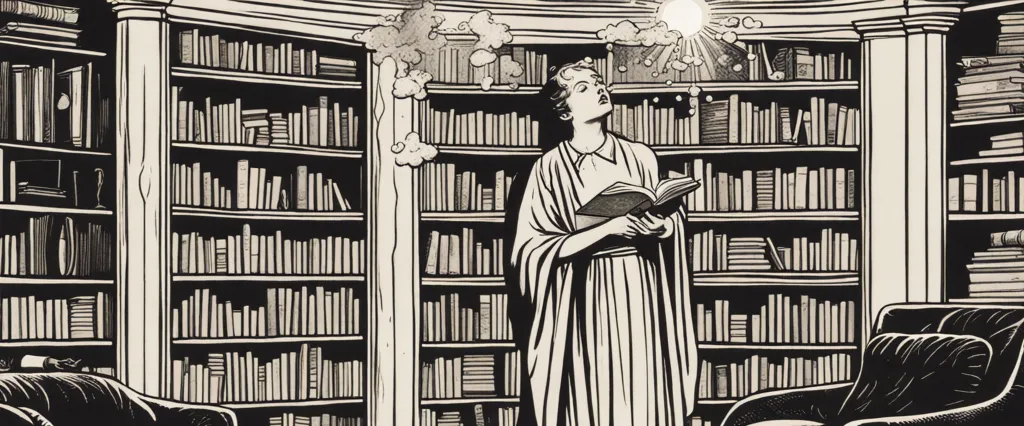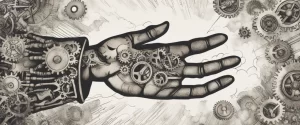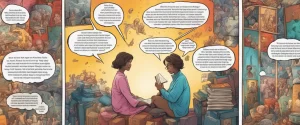——The Agony and the Ecstasy by Irving Stone & Leonardo Da Vinci by Walter Isaacson

Throughout history, great minds have emerged, leaving an indelible mark on humanity with their profound insights and remarkable achievements. Two individuals whose legacies continue to inspire awe and admiration are Michelangelo Buonarroti and Leonardo da Vinci. Both renowned as masters of the Renaissance period, these extraordinary individuals have captivated the world with their unparalleled artistic talent and innovative thinking. As we delve into the realms of their lives and works, two books stand out as powerful narratives that provide a glimpse into the minds of these geniuses: “The Agony and the Ecstasy” by Irving Stone and “Leonardo da Vinci” by Walter Isaacson.
In “The Agony and the Ecstasy,” acclaimed author Irving Stone invites readers to embark on an extraordinary journey, seeking to unravel the intricacies of Michelangelo’s life. With meticulous research and vivid storytelling, Stone crafts a compelling narrative that not only highlights the artist’s creative prowess but also delves into his personal struggles and profound spiritual beliefs. By documenting Michelangelo’s triumphs, failures, and profound inner battles, Stone masterfully portrays the duality of Michelangelo’s existence—his agony in facing the challenges of his art, contrasted with the ecstasy that surged through his being as he witnessed his visions materialize in magnificent creations.
On the other hand, in “Leonardo da Vinci,” Walter Isaacson offers a unique perspective on the life of one of the most enigmatic and multidimensional figures in history. Isaacson, a renowned biographer known for his in-depth explorations of exceptional individuals, meticulously pieces together the puzzle that is Leonardo da Vinci. With access to previously undiscovered notebooks and a keen eye for detail, Isaacson unveils the intricate layers of Leonardo’s genius. The author not only delves into the artist’s famed artworks but also illuminates lesser-known aspects of Leonardo’s life, such as his scientific inquiries, engineering marvels, and philosophical musings. By providing a comprehensive and nuanced account, Isaacson dissects the mind of Leonardo da Vinci, unraveling the inner workings of a polymath who seamlessly merged art, science, and imagination.
As we embark on this comparative study of “The Agony and the Ecstasy” and “Leonardo da Vinci,” we are beckoned into the world of two titans of the Renaissance period. Irving Stone and Walter Isaacson invite us to explore the vast depths of the human spirit and immerse ourselves in the creations and visions of Michelangelo and Leonardo da Vinci. Together, we will uncover the common threads that bind these artistic giants, while also acknowledging the distinctiveness of their characters and the unparalleled mark they left on the world.
Brief Summary of Two Books
The Agony and the Ecstasy by Irving Stone
“The Agony and the Ecstasy” by Irving Stone is a biographical novel that tells the captivating story of Michelangelo Buonarroti, one of the greatest artists of the Italian Renaissance. The book chronicles Michelangelo’s life from his early childhood in Florence to his famous works such as the statue of David and the painting of the Sistine Chapel in Rome.
The story highlights Michelangelo’s immense passion for art and his tireless pursuit of perfection. It explores his struggles and sacrifices, including his strained relationships with his family and the constant financial hardships he faced. Stone vividly portrays Michelangelo’s intense dedication and devotion to his craft, as he tirelessly works through physical and emotional challenges to bring his artistic visions to life.
Through vivid descriptions and meticulous research, Stone provides readers with a deep understanding of Michelangelo’s artistic process, his determination to challenge traditional norms, and his constant search for inspiration. The novel also delves into the complexities of the artist’s personal life, including his complex relationships with various powerful figures of his time.
“The Agony and the Ecstasy” paints a comprehensive portrait of Michelangelo, both as an artist and as a human being. It explores his triumphs and failures, his internal battles between religious devotion and artistic pursuit, and his enduring legacy as one of history’s greatest masterminds. Overall, the book offers an insightful and captivating narrative that allows readers to immerse themselves into the world of Michelangelo and experience his artistic journey.
Leonardo Da Vinci by Walter Isaacson
“Leonardo Da Vinci” by Walter Isaacson is a comprehensive biography that delves into the life, achievements, and legacy of the iconic artist, inventor, and thinker, Leonardo da Vinci. Isaacson explores Leonardo’s extraordinary genius and his insatiable curiosity across a wide range of disciplines, spanning art, science, mathematics, engineering, and much more. The book not only chronicles Leonardo’s artistic masterpieces like the Mona Lisa and The Last Supper but also sheds light on his lesser-known areas of expertise, such as anatomy, architecture, and military engineering.
Isaacson portrays Leonardo as a man constantly questioning and observing the world around him, driven by his keen intellect and deep fascination with the multitude of phenomena he encountered. The author examines the intricacies of Leonardo’s artistic process, providing insights into his meticulous attention to detail, his mastery of light and shadow, and his innovative approach to composition. Isaacson also explores Leonardo’s scientific investigations, experiments, and inventions, revealing his groundbreaking concepts and designs that were often far ahead of his time.
In addition to exploring Leonardo’s intellectual pursuits, Isaacson delves into the artist’s personal life, presenting a multifaceted portrait of his relationships, friendships, and patrons. Through meticulous research and analysis of Leonardo’s notebooks, the author offers a glimpse into his thoughts, ideas, and inner struggles.
By presenting a thorough portrayal of Leonardo da Vinci, Isaacson emphasizes the significance of his unique blend of artistic, scientific, and imaginative talents. The book highlights Leonardo’s insatiable curiosity and his audacious spirit, demonstrating how his relentless pursuit of knowledge and experimentation helped shape his art and made him an extraordinary figure in the history of humanity.
Comparison between Two Books

Similarities in Artists
Both The Agony and the Ecstasy by Irving Stone and Leonardo Da Vinci by Walter Isaacson explore the lives and artistic journeys of renowned artists. While one focuses on Michelangelo and the other on Leonardo da Vinci, there are several similarities that can be drawn between the artists portrayed in these books:
1. Unparalleled Creativity: Both Michelangelo and Leonardo da Vinci were exceptional artists who displayed incredible creativity and innovation in their respective fields. They pushed the boundaries of art, experimenting with new techniques and artistic ideas.
2. Indomitable Work Ethic: Both artists were known for their unwavering dedication and tremendous work ethic. They often spent countless hours in their studios, meticulously perfecting their masterpieces. Their commitment to their craft was unparalleled.
3. Mastery in Various Art Forms: Michelangelo and Leonardo da Vinci were not restricted to a single artistic discipline. They excelled in multiple areas, transcending the boundaries of painting and sculpture. Michelangelo was also highly skilled in architecture, while Leonardo was known for his achievements in fields such as engineering, anatomy, and even musical composition.
4. Striving for Perfection: Both artists were relentless perfectionists, continuously seeking to improve their works of art. They were never satisfied with mediocrity and constantly pushed themselves to achieve artistic excellence.
5. Experimentation and Innovation: Both Michelangelo and Leonardo da Vinci were pioneers in their respective eras, constantly experimenting with new techniques and materials. They weren’t afraid to challenge convention and break away from traditional norms, leading to groundbreaking advancements in art.
6. Deep Observation of Nature: Both artists possessed a keen eye for observing the natural world and drew inspiration from it. Their work reflects a deep appreciation for the anatomical structures of human bodies, landscapes, and even animals. This profound understanding of nature greatly influenced their artistic style.
7. Ambitious Projects: Both artists undertook ambitious projects throughout their careers. Michelangelo’s Sistine Chapel ceiling and Leonardo da Vinci’s Mona Lisa and The Last Supper are among the most famous works of art in history. These projects required immense skill, patience, and a level of ambition that only exceptional artists can aspire to.
Overall, both Michelangelo and Leonardo da Vinci possessed extraordinary artistic talents, an unyielding passion for their craft, and an unwavering commitment to achieving artistic greatness. These similarities between the two artists highlight the exceptional and transformative nature of their contributions to the world of art.
Divergences in Artists
“The Agony and the Ecstasy” by Irving Stone and “Leonardo Da Vinci” by Walter Isaacson are both acclaimed biographies that delve into the lives of two iconic artists, Michelangelo and Leonardo da Vinci, respectively. While both books offer valuable insights into the artistic genius of these individuals, they differ in their portrayal of artists and their creative processes.
In “The Agony and the Ecstasy,” Irving Stone presents Michelangelo as a tortured and tormented artist. The book highlights the challenges and struggles Michelangelo faced throughout his career, including conflicts with patrons, financial difficulties, and his relentless pursuit of perfection. Stone portrays artists as individuals who sacrifice their personal lives and well-being in the relentless pursuit of their craft. He emphasizes the agony that comes with striving for artistic excellence, depicting Michelangelo as a man enslaved by his own talent.
On the other hand, in “Leonardo Da Vinci,” Walter Isaacson paints a more nuanced picture of artists. Isaacson delves into the multifaceted nature of Leonardo da Vinci, showcasing his diverse interests, ranging from art and anatomy to engineering and music. Instead of focusing solely on the agony endured by artists, Isaacson highlights the curiosity and joy that drove Leonardo’s creative process. He emphasizes the ecstasies and triumphs experienced by artists, presenting them as individuals who explore the world with an insatiable appetite for knowledge and beauty.
The divergence in these books lies in their contrasting approaches to the portrayal of artists. Stone’s emphasis on agony and sacrifice suggests that great art can only be achieved through hardship and suffering. On the other hand, Isaacson’s emphasis on ecstasy and curiosity suggests that artistic genius emerges from a deep passion for exploration and a desire to celebrate the wonders of life.
While both approaches have merit, the divergence presents a fascinating dichotomy in how artists are understood and appreciated. Stone’s narrative may resonate with those who believe in the romanticized image of the tormented artist, sacrificing their well-being for their craft. In contrast, Isaacson’s perspective offers a more balanced and holistic view, celebrating the joys and wonders that artists experience in their creative journeys.
Ultimately, whether one aligns with Stone’s portrayal of artists as suffering or Isaacson’s portrayal of artists as curious and joyful depends on individual perspectives and interpretations of the artistic process. However, both books provide valuable insights into the lives and works of two extraordinary artists who left an indelible mark on history.

Conclusion
This ultimately comes down to personal preference and interests. Both books offer valuable insights into the lives and works of influential artists, but they have different approaches and focuses.
“The Agony and the Ecstasy” by Irving Stone is a biographical novel based on the life of Michelangelo Buonarroti. It delves into the challenges and triumphs of Michelangelo’s life, particularly his quest to create masterpieces like the Sistine Chapel ceiling and the sculptures of David and Pieta. Stone’s book is known for its meticulous research and vivid storytelling, providing a fictionalized but well-informed portrayal of the artist.
On the other hand, “Leonardo Da Vinci” by Walter Isaacson is a comprehensive biography that explores the life and achievements of Leonardo da Vinci. Isaacson offers a detailed account of Da Vinci’s art, inventions, scientific inquiries, and his multidisciplinary approach to creativity. The book brings together Da Vinci’s notebooks, writings, and artwork to unravel the genius behind his works.
If you prefer a combination of historical facts with fictional storytelling, “The Agony and the Ecstasy” may be more appealing. It captures the essence of Michelangelo’s artistic struggles and achievements through a narrative lens. However, if you are particularly interested in learning about Da Vinci’s diverse achievements and uncovering the complexities of his work and character, then “Leonardo Da Vinci” might be the better choice.
Ultimately, it is recommended to explore both books if possible, as they offer unique perspectives on two remarkable artists who left an indelible mark on art history.



